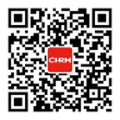2020 was a year of massive change for many, with anti-pandemic measures in place across the majority of countries, building owners, employees and tenants are still facing a unique and unprecedented set of challenges. During lockdowns, many buildings had to be maintained with limited access. Those that could stay open had to make changes rapidly to minimize viral spread. Businesses quickly realised that traditional working approaches - with conservative and unadaptable workplace management styles - amplified the impact of the global pandemic, suppressing business growth and stifling career development of employees.
In light of the long-enduring pandemic, CHROs (Chief Human Resources Officer) are proactively seeking the best way to overcome uncertain and abnormal working environments and get back to ‘normal business’ operations. It is here where the implementation of smart buildings has proven key to providing a safe, healthier, and smarter workplace. These buildings can generate valuable environmental and occupancy data to inform better decision-making, while also empowering employees to take advantage of remote working, with more workplace flexibility in terms of space usage and building management.
Digitalizing Future Workplace with a Data-Driven Approach
Today, thanks to technological advancements, a smart workplace is no longer a hypothetical concept, but a viable choice which draws on people, technology, and collaboration.
To safeguard employees in a post-COVID 19 world, business decision-makers urgently need to re-examine an invisible but essential element - indoor air quality and HVAC (heating, ventilation and air conditioning) systems. Thankfully, today we have the technology needed to enable smooth and interconnected core data access from buildings. This includes connecting parts of a building’s infrastructure that have traditionally been siloed: Heating, ventilation, air-conditioning, lighting & blind control, power distribution and environmental sensors. Add to this list, new inputs such as air quality sensors and you can begin to see how seamless environmental workplace monitoring, can significantly improve occupant well-being and ensure a safe environment in which employees can focus on creativity and innovation.
Where previously integration work on this scale may have seemed daunting, many new options can make adopting new building management procedures simpler and more cost-effective. This type of innovation does not need to be limited to new buildings. With EcoStruxure™ from Schneider Electric, an open, digital platform leveraging IoT, mobility, sensing, cloud, analytics, and cybersecurity, companies do not need to perform a complete ‘rip and replace’ to achieve the benefits of completely new smart building infrastructure and deliver Innovation at every level.
With EcoStruxure™, the building management system (BMS) is elevated to being the central ‘brain’ of the facility, with all assets connected through open standards, and data access enabled for virtual assistants via smartphone apps. For example, the cloud-based EcoStruxure™ Building Advisor service from Schneider Electric is compatible with over 40 building management systems (BMS) on the market today.
Learning from APAC Success Stories
The need for a smart workplace has become a global imperative for those looking to deliver higher efficiency and optimize the well-being and comfort of employees. At Schneider Electric we understand the importance of acting as a digital partner for sustainability and efficiency, empowering our customers to make the most of their energy and resources.
We have worked to deliver some truly exciting projects in the APAC region. This includes Sodexo, Who worked with us to roll out their new regional headquarter office in Singapore, bringing together regional and local country teams in a collaborative environment. With no visibility on energy consumption levels in its previous offices, Sodexo wanted to combine energy management and comfort to create an agile workspace.
After careful consideration, it selected Schneider Electric’s smart solutions, including EcoStruxure Workplace Advisor, EcoStruxure Power Monitoring Expert, SmartX Room Controllers and Occupancy Sensors. Coupled with real-time data analytics, this has helped them to digitalise their operations by offering trackable easy-to-understand insights on aspects like energy consumption. As a result, they have achieved better comfort and energy management, while allowing for lifecycle services.
By linking up more than 200 sensors, Sodexo’s office is now equipped to provide intelligent insights, drive automated actions and send alerts to improve both efficiency and comfort. Since the deployment of these smart solutions, Sodexo has recorded a 20% decrease in energy consumption and expects a return on CapEx in just a few years. Meanwhile, its building management team benefits from fully integrated facility management services with improved operational efficiency and energy sustainability.
Achieving Workplace Sustainability with Schneider Electric
When the world starts to emerge from the shadow of COVID-19, it is likely that many aspects of our daily lives will be altered forever requiring rapid adaptability from individuals, communities, countries, and workplaces.
For all business owners, a change in mindset is key to making buildings more flexible, this is not only a technical consideration, but a cultural shift in a post-pandemic, fast-evolving, and more demanding world. For the future of the workplace, data will be critical to driving more comfortable and responsive buildings for employees. That’s why business leaders need to consider how spaces will be used in the future and what new scenarios might arise when selecting any new system or technology.
Annick Villeneuve, Vice President of the Real Estate Segment and Strategic Partnerships, Schneider Electric
 手机版|
手机版|

 二维码|
二维码|






